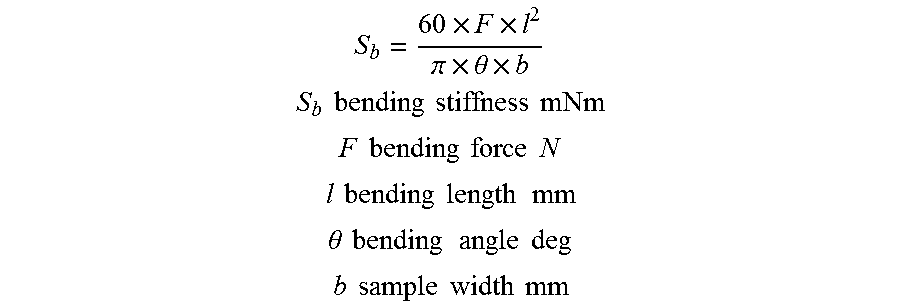Foamed aqueous composition
a technology of foaming and aqueous composition, applied in the direction of radiation-absorbing paints, textiles and paper, etc., can solve the problems of reducing manufacturing productivity, affecting the effect of opacifying colorants, so as to reduce the exposure of opacifying colorants, eliminate sewing and surface failures, and facilitate laundromat
- Summary
- Abstract
- Description
- Claims
- Application Information
AI Technical Summary
Benefits of technology
Problems solved by technology
Method used
Image
Examples
invention example 1
[0207]A foamable aqueous composition consisted of 47.2 g of the aqueous binder dispersion and 2.8 g of a 53.62 weight % aqueous dispersion of P2 porous particles. The resulting foamable aqueous composition was foamed (aerated) in an ice bath to provide a density of 0.113 g / cm3, coated onto a surface of the porous substrate described above using a coating knife with a 3.175 mm (0.125 inch) gap, and dried. The final dry foamed aqueous composition contained 6.1 weight % of P2 porous particles and 0.061 weight % of carbon black on a total weight basis. The dry foamed aqueous composition was then crushed on the porous substrate as described in Comparative Example 1. The resulting foamed, opacifying element had a light grey color and exhibited good light blocking using the flashlight test described above compared to Comparative Example 1 that contained no porous particles and compared to Comparative Example 2 that contained no opacifying colorant in the porous particles.
invention example 2
[0208]The foamable aqueous composition consisted of 47.5 g of the aqueous binder dispersion described above and 2.5 g of a 60.54 weight % aqueous dispersion of P3 porous particles. The resulting foamable aqueous composition was foamed (aerated) in an ice bath to provide a density of 0.176 g / cm3, and coated onto a surface of the porous substrate described above using a coating knife with a 3.175 mm (0.125 inch) gap, and dried. The dry foamed composition contained 6.11 weight % of P3 porous particles and 0.0611 weight % of carbon black on a total weight basis. The dry foamed aqueous composition was then crushed on the porous substrate as described in Comparative Example 1. The resulting foamed, opacifying element exhibited good light blocking using the flashlight test as described above compared to Comparative Examples 1 and 2. The color of the foamed, opacifying element of this inventive example was still light grey as in Invention Example 1 but the presence of the optical brightener...
invention example 3
[0209]The foamable aqueous composition consisted of 46.7 g of the aqueous binder dispersion described above, 2.8 g of a 53.62 weight % aqueous dispersion of P2 porous particles, and 0.5 g of a 50.67 weight % aqueous dispersion of P4 porous particles. The resulting foamable aqueous composition was foamed (aerated) in an ice bath to provide a density of 0.166 g / cm3, coated onto a surface of the porous substrate described above using a coating knife with a 3.175 mm (0.125 inch) gap, and dried. The dry foamed aqueous composition contained 7.12 weight % of P2 and P4 porous particles, 0.061 weight % of carbon black, and 0.0021 weight % of cyan pigment on a total weight basis. The dry foamed aqueous composition was then crushed on the porous substrate as described in Comparative Example 1. The resulting foamed, opacifying element exhibited good light blocking using the flashlight test compared to Comparative Examples 1 and 2. In addition, the resulting foamed, opacifying element had a more...
PUM
| Property | Measurement | Unit |
|---|---|---|
| particle size | aaaaa | aaaaa |
| particle size | aaaaa | aaaaa |
| density | aaaaa | aaaaa |
Abstract
Description
Claims
Application Information
 Login to View More
Login to View More - R&D
- Intellectual Property
- Life Sciences
- Materials
- Tech Scout
- Unparalleled Data Quality
- Higher Quality Content
- 60% Fewer Hallucinations
Browse by: Latest US Patents, China's latest patents, Technical Efficacy Thesaurus, Application Domain, Technology Topic, Popular Technical Reports.
© 2025 PatSnap. All rights reserved.Legal|Privacy policy|Modern Slavery Act Transparency Statement|Sitemap|About US| Contact US: help@patsnap.com

